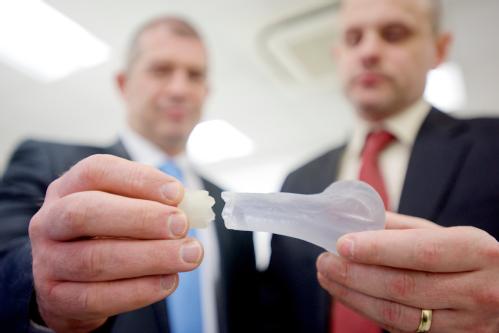Solving complex crimes using Advanced Forensic Imaging Technology
Solving complex crimes using Advanced Forensic Imaging Technology
Forensic science has played a key role in the criminal justice system since fingerprinting was first introduced in criminal investigations in the 19th century and, according to the 2019 Science and Technology Select Committee report, rapid forensic science has “the potential to reduce costly police investigative time.” The report also states that without leadership and continued development in UK forensic science “crimes may go unsolved and the number of miscarriages of justice may increase.”
Research by WMG, University of Warwick is helping to push forward pioneering methods at the forefront of forensic science, making a positive contribution to the UK’s criminal justice system and ensuring victims of crime and their families receive the justice they deserve. Novel image processing methods and 3D visualisation techniques developed by the research team at the Centre for imaging, Metrology, and Additive Technology (CiMAT) led by Professor Mark Williams, have provided police investigators with a powerful new tool for uncovering and evidencing crime.

Solving complex crimes
X-ray Computed Tomography (XCT) is a technique where many scans are digitally combined to provide an accurate image of a solid cross-section of matter. Micro-CT relies on the same underlying technology but is much more detailed, down to a thousandth of a millimetre (micron) scale. As a complementary technique to existing post-mortem procedures, micro-CT grants several distinct advantages in criminal investigations. In addition, preparation of 3D printed models for use in the court room aids with prosecution of serious crimes.
As with analogous Computed Axial Tomography (CAT) scans, micro-CT similarly leaves forensic samples untouched. Brett Lockyer, a Home Office registered Consultant Forensic Pathologist in the Forensic Pathology Services (FPS), outlined that this offers “significant value to forensic analysis at the front end of an investigation.” These techniques have not only enabled police forces to solve complex crimes, but also assisted the Crown Prosecution Service (CPS) in their evidence reviews and presentation of cases. The research has also been published in peer reviewed internationally leading forensic science journals.
Collaborating with University Hospitals Coventry and Warwickshire NHS Trust, the team created methods and unique algorithms for reconstruction, in parallel with human anatomy studies. They then produced models of anatomical features, including the larynx, heart, hip and femur. The aim of the anatomical research was to validate novel surgical procedures.

Importantly, the research enabled West Midlands Police to develop controlled baseline datasets of normal anatomical variation and common types of injuries, which are then used to support Home Office Pathologists in helping determine cause of death.
For example, in 2014, WMG’s novel 3D technologies including micro-CT and 3D printing were applied to the forensic investigation of a suitcase found in a canal in West Midlands, containing a dismembered human body. High-resolution 3D prints of burnt human bone provided a crucial link between the site where the body had been disposed of and the home of the murder suspect – leading in part to a murder conviction.
Saving costs and increasing efficiency
Between 2014 and 2020, micro-CT was used by 18 police forces in investigating 171 criminal cases. Analysis has shown that in three separate criminal cases £10,000 was saved for each, with Mark Payne, Assistant Chief Constable of WMP further qualifying that this saving extends to around a third of all investigations where micro-CT has been applied. By extrapolation, at least £500,000 has been saved up to mid-2020 – with Mark Payne adding: “Technology and research at Warwick has therefore significantly improved our investigative processes and outcomes”
On advancing national understanding, Michelle Painter, Assistant Director of Forensic Services at WMP, said: “This research is truly ground-breaking and has helped change our understanding of the impact of the use of force on the body during numerous modes of strangulation”.
To accelerate and facilitate wider uptake of this technology, the Forensic Centre for Digital Scanning and 3D Printing, a partnership between West Midlands Police and the University of Warwick, was established in 2019. Since the centre opened,140 specialist practitioners have received continuous professional development training on image processing methods and 3D visualisation techniques.
Professor Mark Williams, WMG, commented: “There are numerous key advantages for using these techniques, including: aiding the understanding of juries, offering a non-destructive means of post-mortem examination, and providing savings in time and money for the police forces involved. In addition to underpinning new standard operating procedures, our research has changed criminal investigations into suspicious deaths nationally, enriching our justice system and engendering a safer society.”
To learn more about this research visit: https://warwick.ac.uk/fac/sci/wmg/research/materials/metrology/
